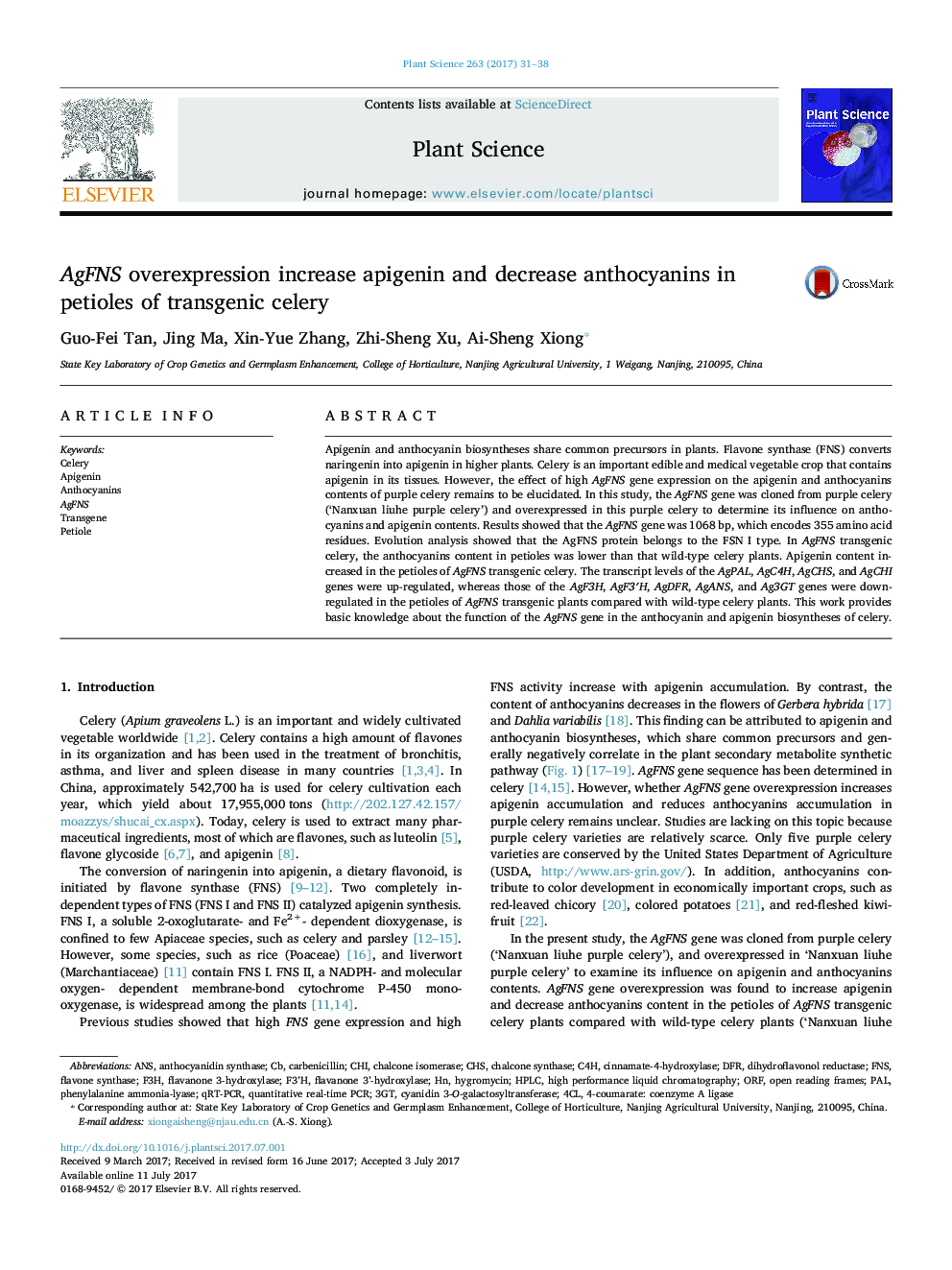| Article ID | Journal | Published Year | Pages | File Type |
|---|---|---|---|---|
| 5515757 | Plant Science | 2017 | 8 Pages |
â¢Apigenin and anthocyanins are products of secondary metabolism in plants.â¢AgFNS gene was cloned from purple celery and overexpressed in purple celery.â¢AgFNS overexpression increases apigenin and decreases anthocyanins content.â¢AgFNS overexpression influence on anthocyanin and apigenin metabolism.
Apigenin and anthocyanin biosyntheses share common precursors in plants. Flavone synthase (FNS) converts naringenin into apigenin in higher plants. Celery is an important edible and medical vegetable crop that contains apigenin in its tissues. However, the effect of high AgFNS gene expression on the apigenin and anthocyanins contents of purple celery remains to be elucidated. In this study, the AgFNS gene was cloned from purple celery ('Nanxuan liuhe purple celery') and overexpressed in this purple celery to determine its influence on anthocyanins and apigenin contents. Results showed that the AgFNS gene was 1068Â bp, which encodes 355 amino acid residues. Evolution analysis showed that the AgFNS protein belongs to the FSN I type. In AgFNS transgenic celery, the anthocyanins content in petioles was lower than that wild-type celery plants. Apigenin content increased in the petioles of AgFNS transgenic celery. The transcript levels of the AgPAL, AgC4H, AgCHS, and AgCHI genes were up-regulated, whereas those of the AgF3H, AgF3â²H, AgDFR, AgANS, and Ag3GT genes were down-regulated in the petioles of AgFNS transgenic plants compared with wild-type celery plants. This work provides basic knowledge about the function of the AgFNS gene in the anthocyanin and apigenin biosyntheses of celery.
